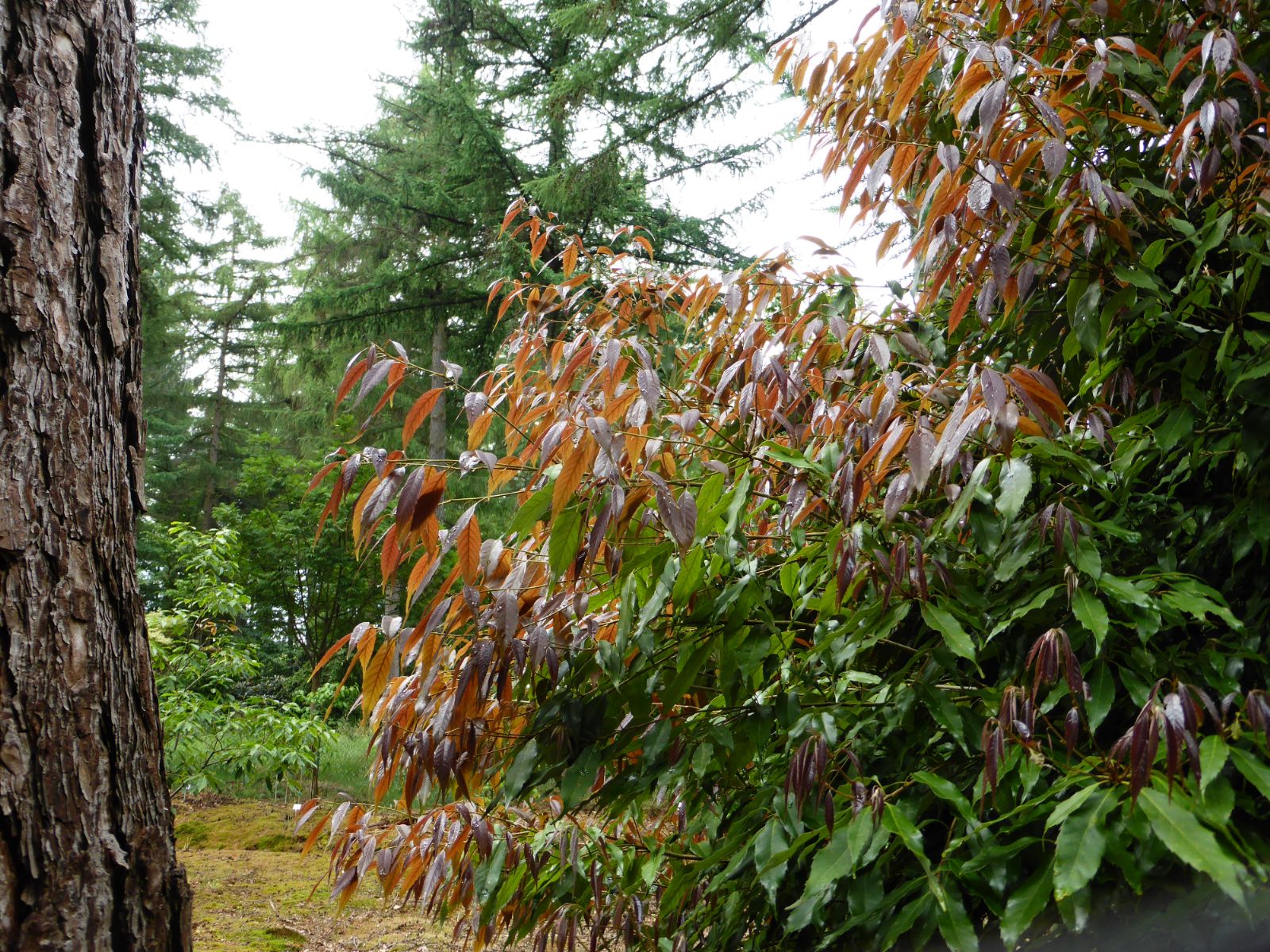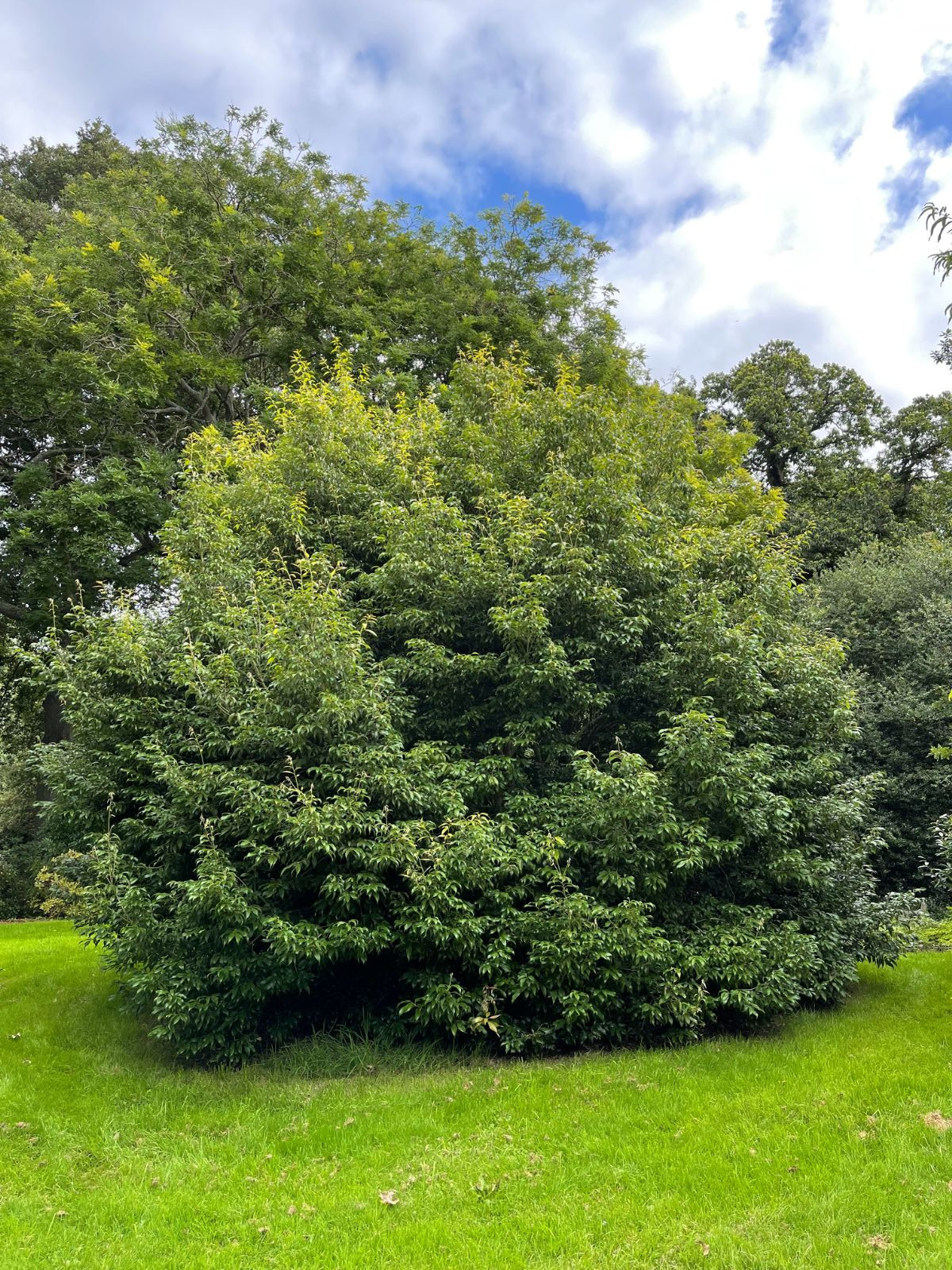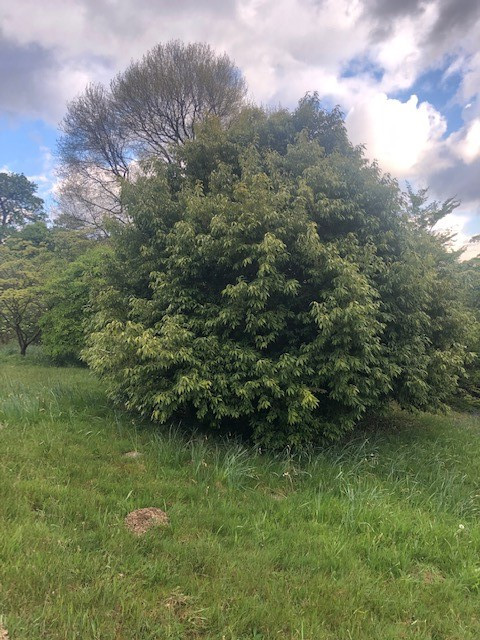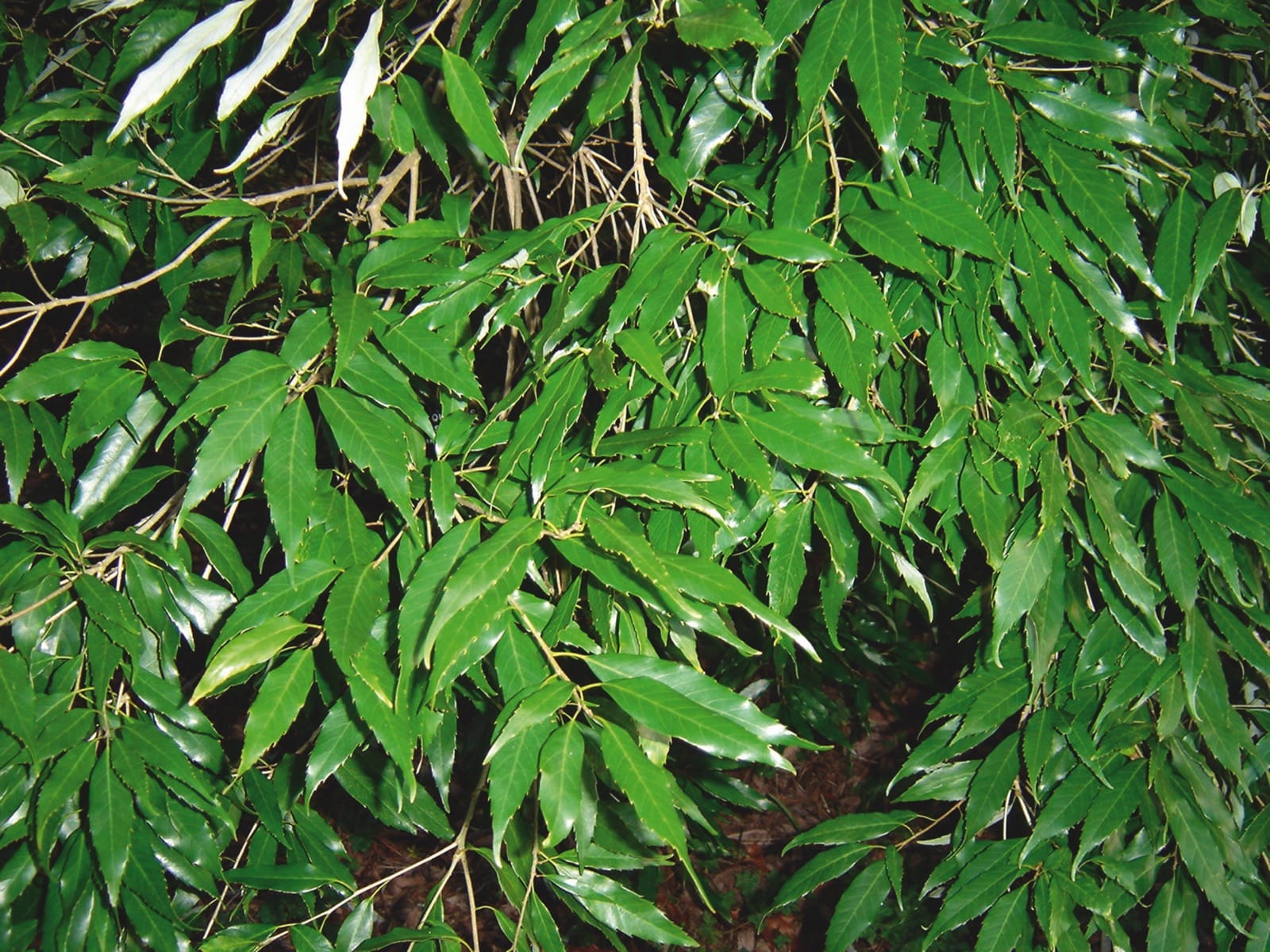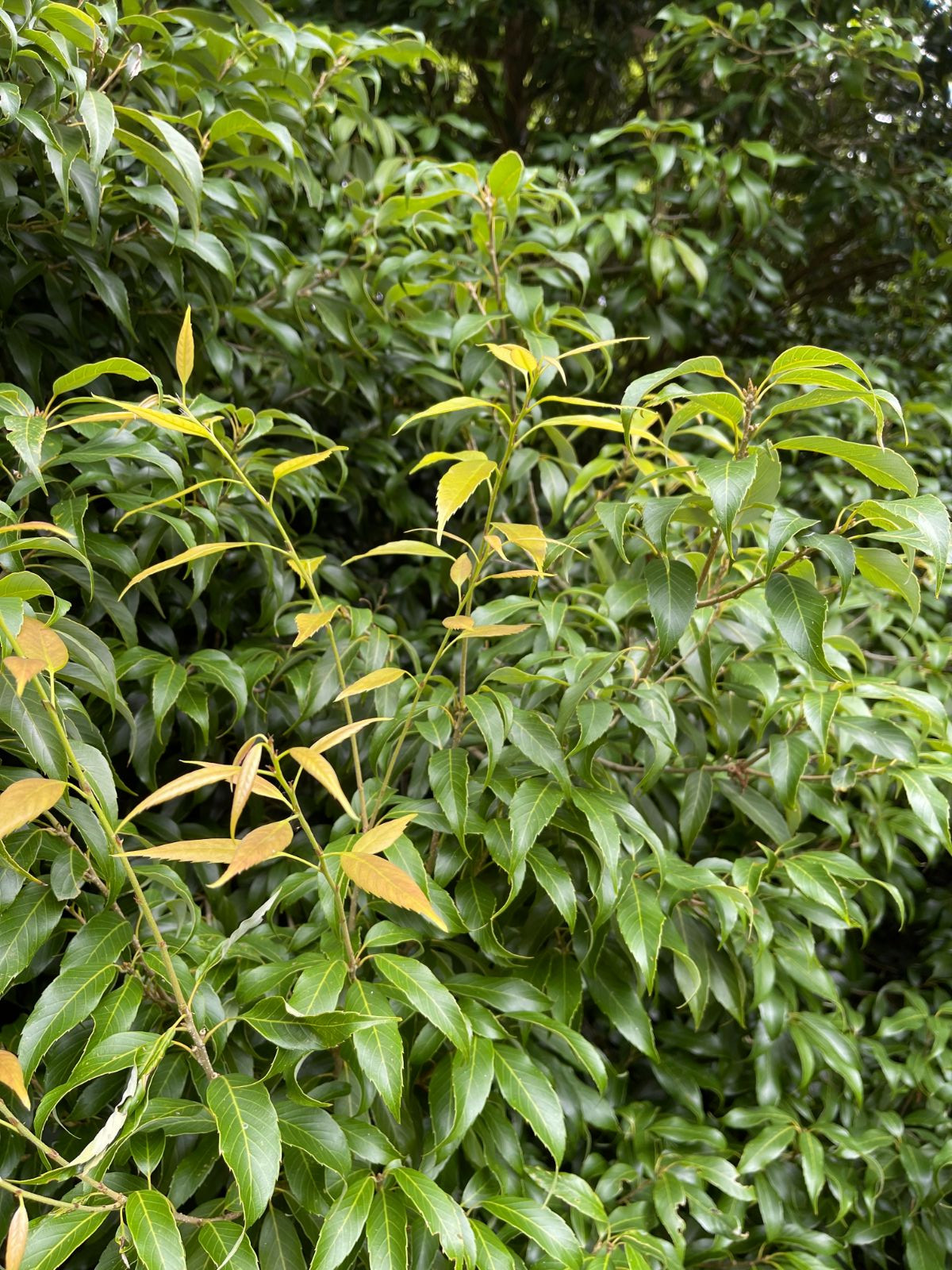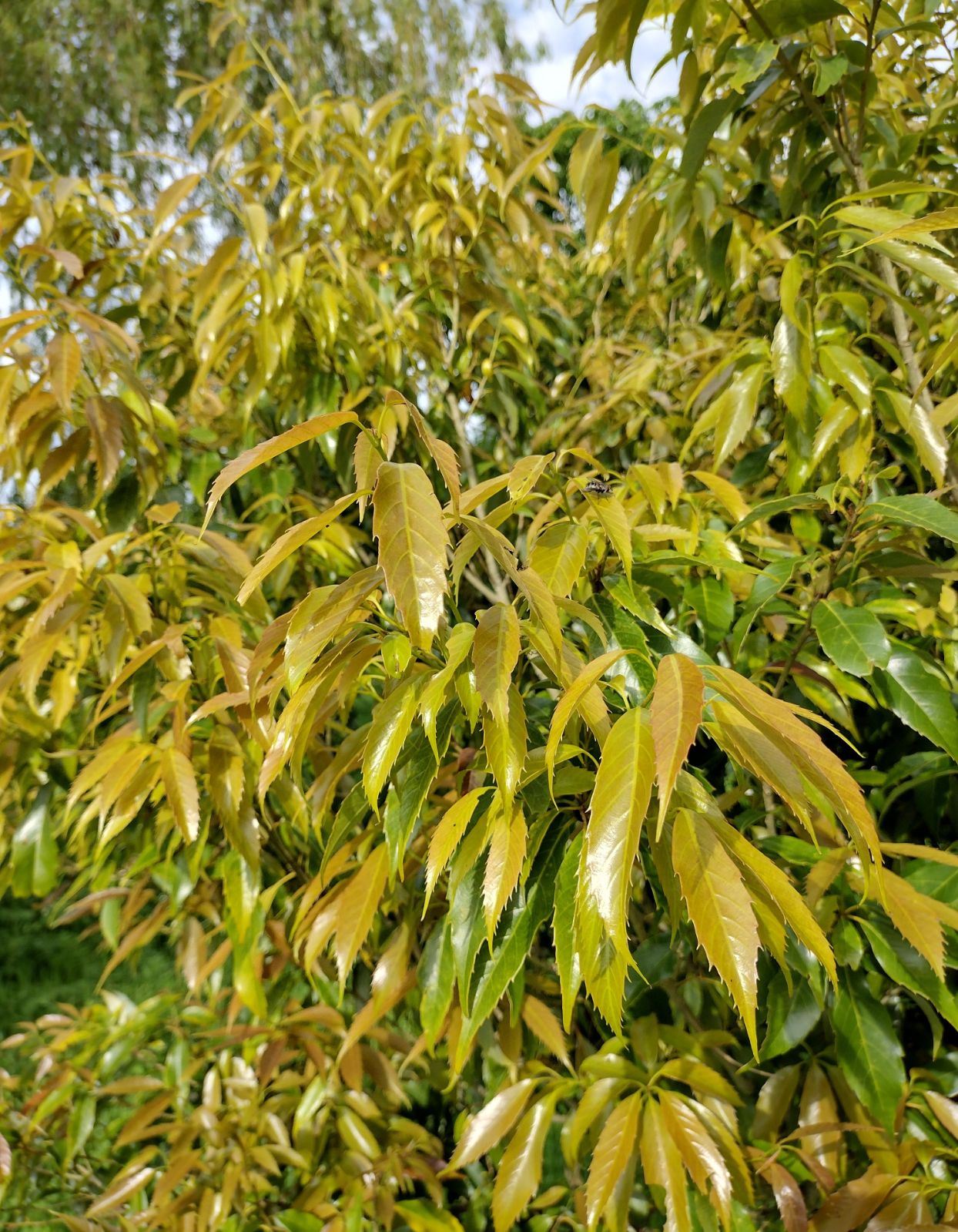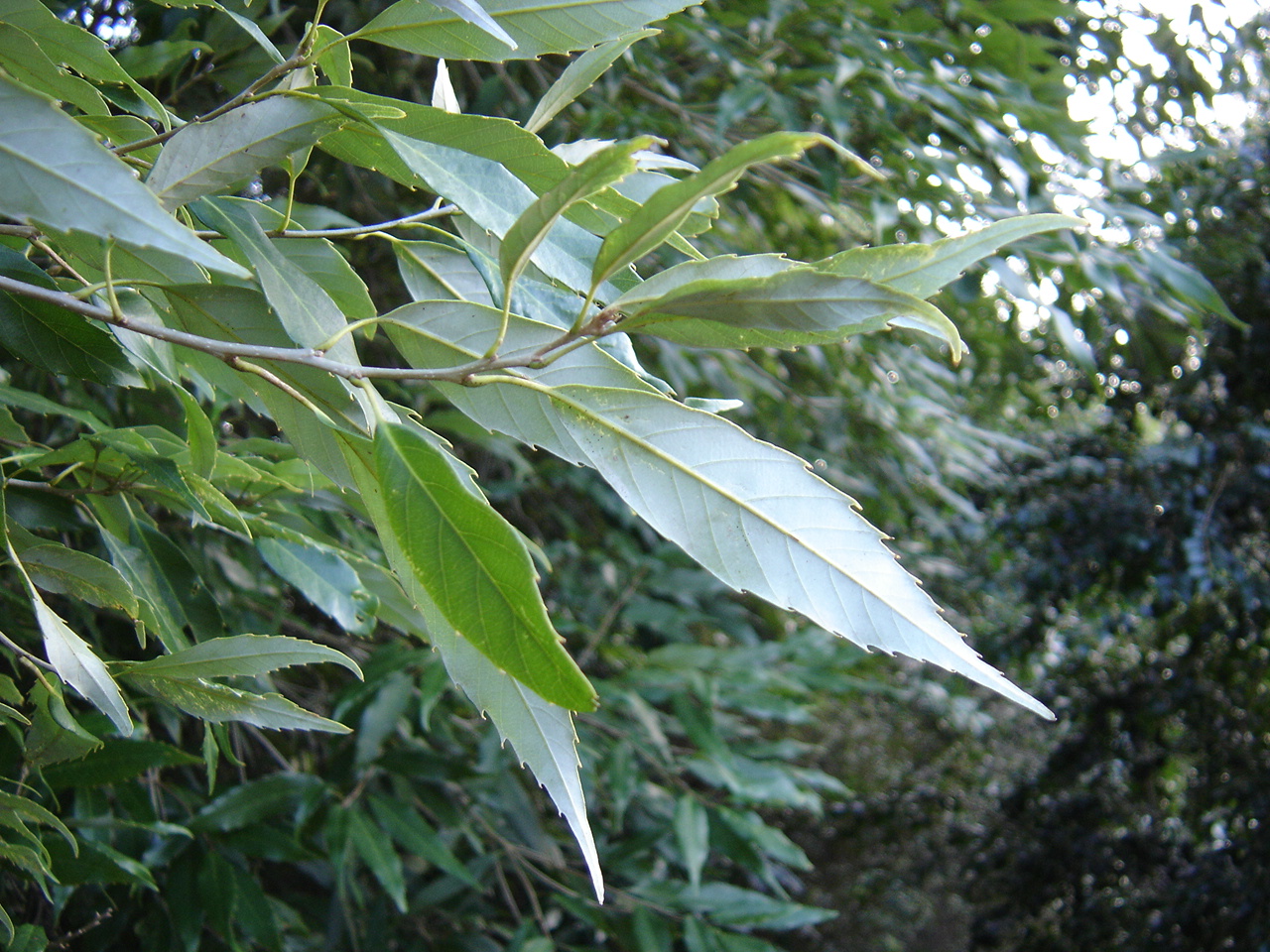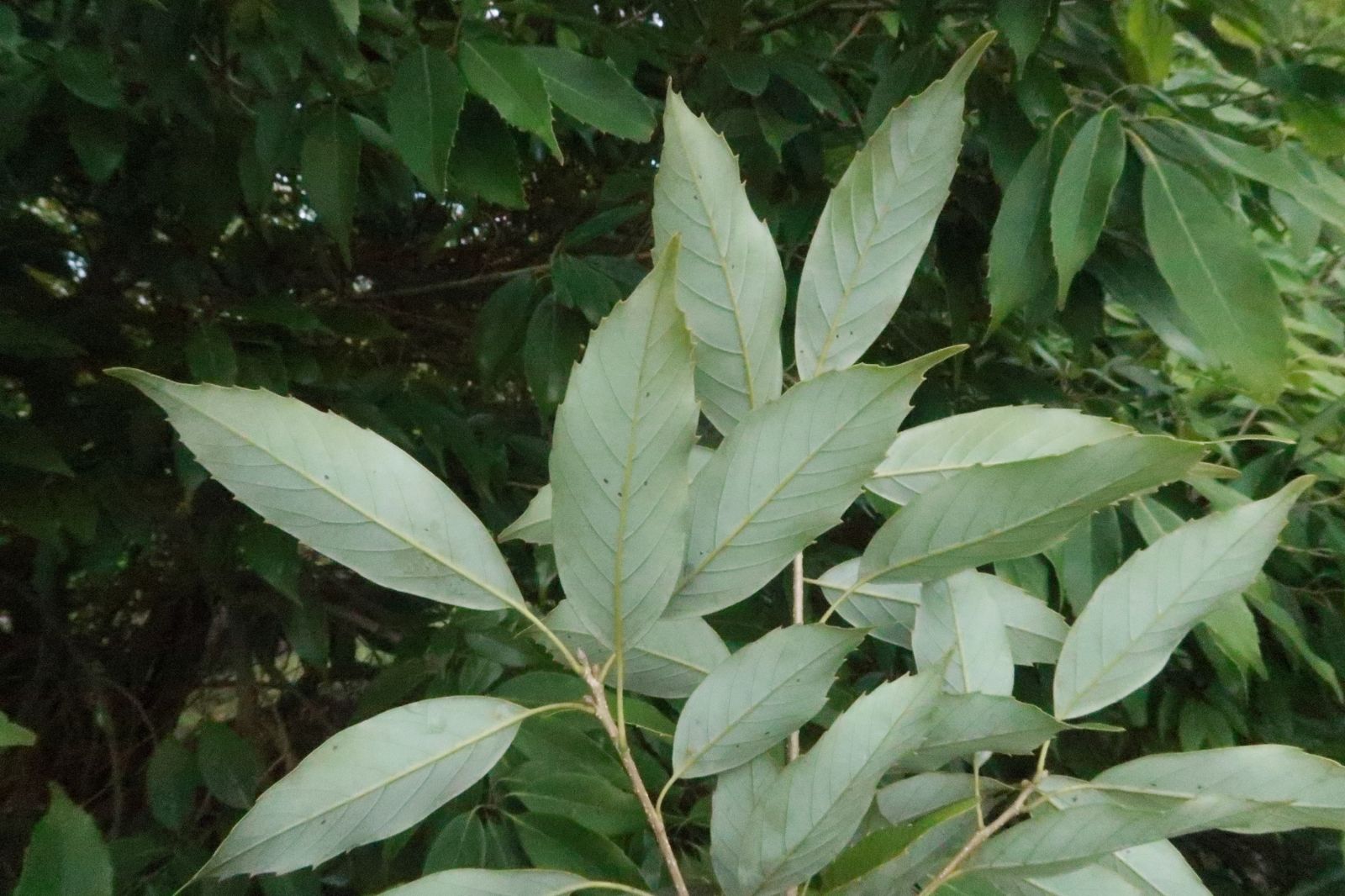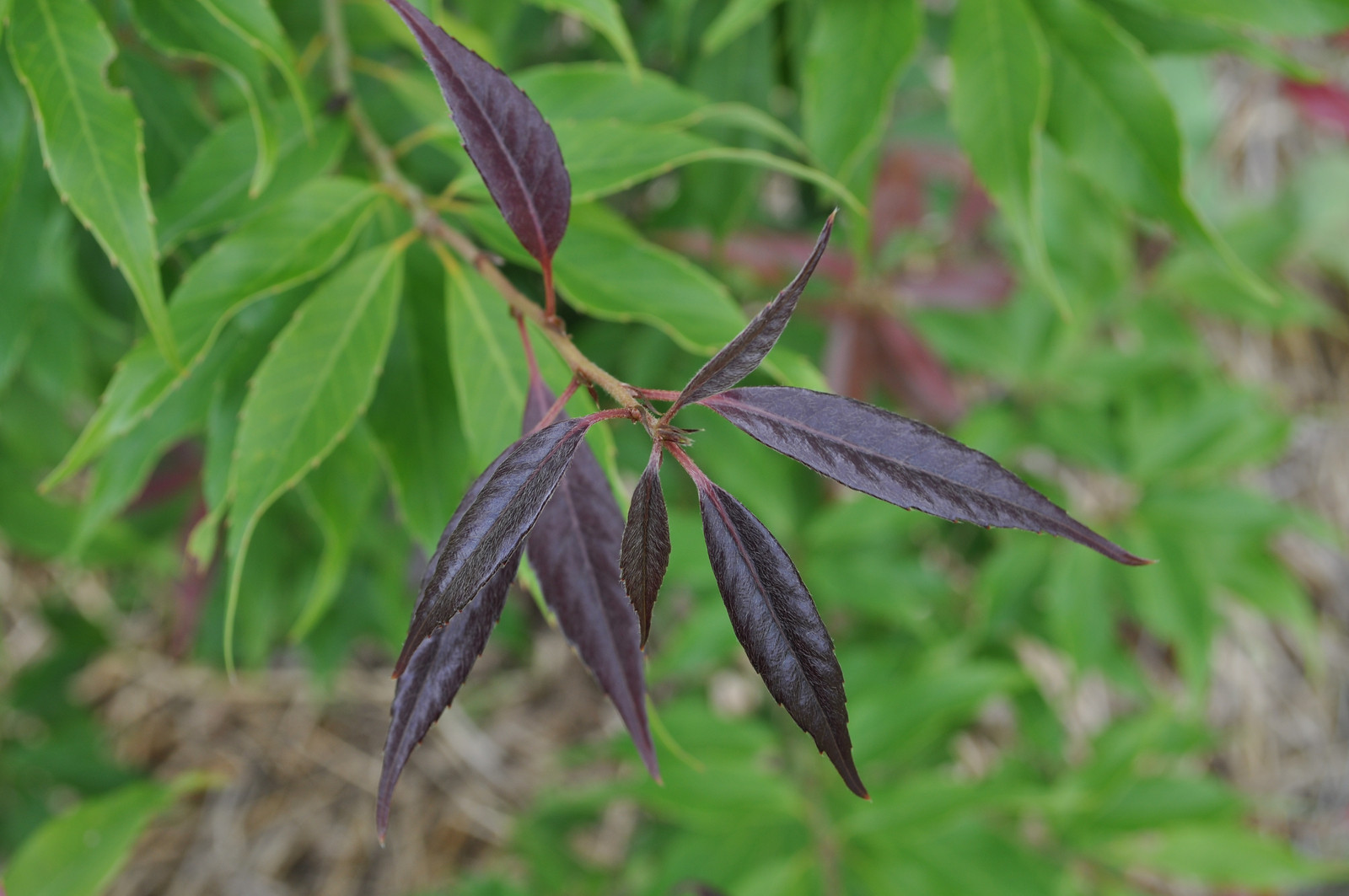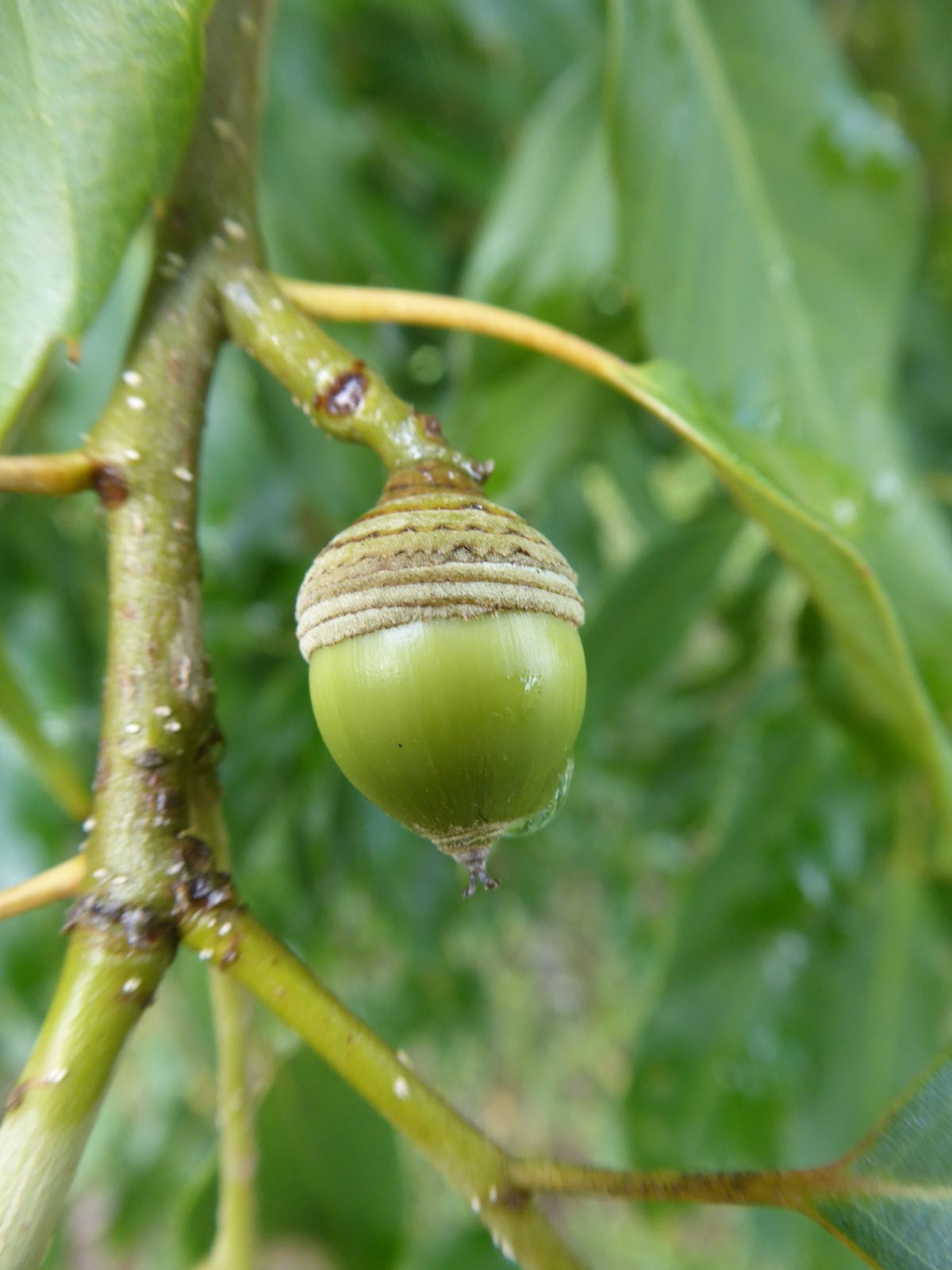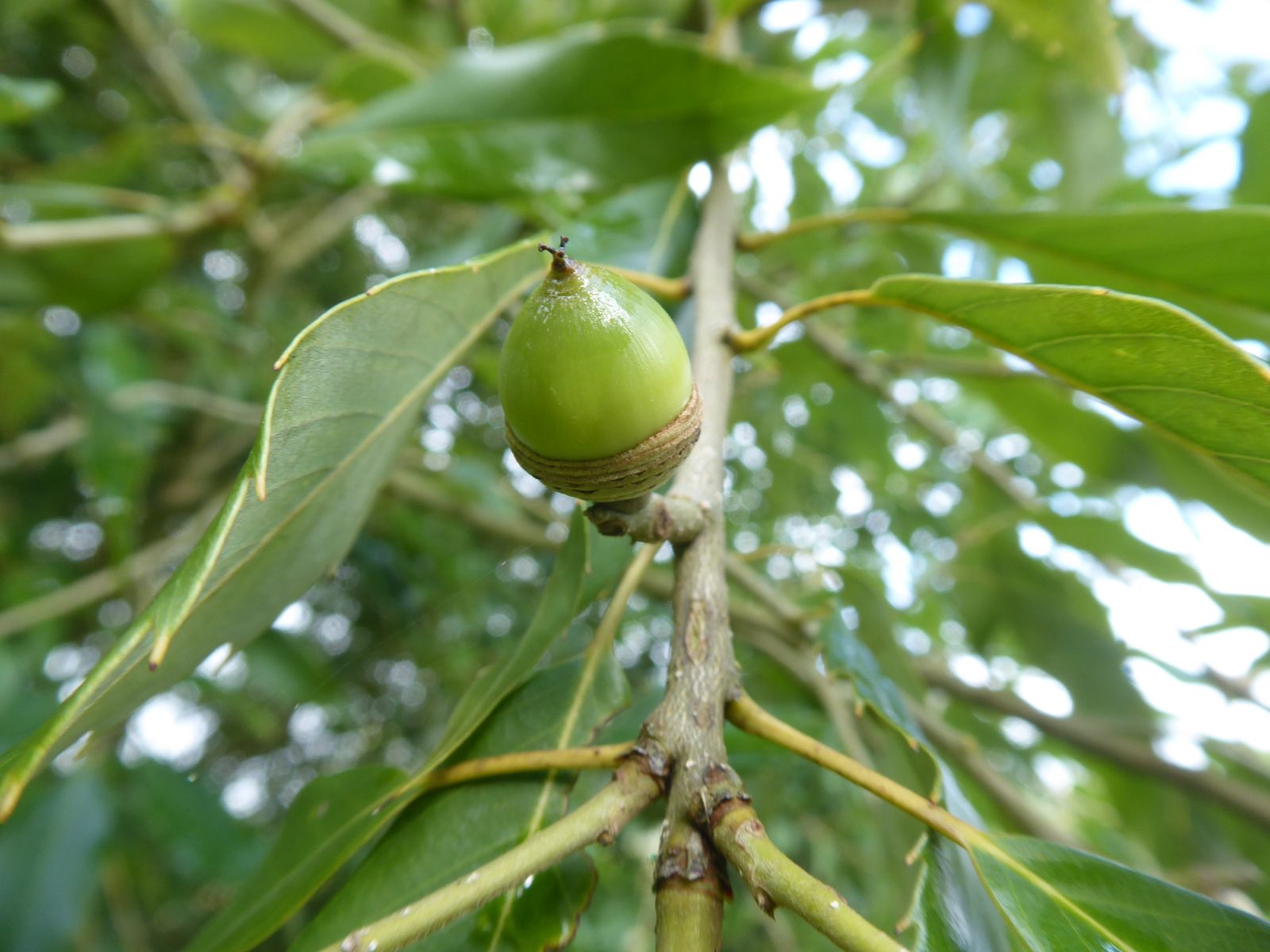Quercus salicina
Sponsor
Kindly sponsored by
The Trees and Shrubs Online Oak Consortium
Credits
Allen Coombes & Roderick Cameron (2022)
Recommended citation
Coombes, A. & Cameron, R. (2022), 'Quercus salicina' from the website Trees and Shrubs Online (treesandshrubsonline.
Genus
- Quercus
- Subgen. Cerris, Sect. Cyclobalanopsis
Common Names
- ウラジロガシ (urajirogashi)
- ホソバガシ (hosobagashi)
- 참가시나무 (chamgasinamu)
Synonyms
- Cyclobalanopsis salicina (Blume) Oerst.
- Quercus stenophylla (Blume) Makino
- Quercus glauca var. salicina (Blume) Menitsky
- Quercus salicifolia Siebold ex Ottol.
Other taxa in genus
- Quercus acerifolia
- Quercus acherdophylla
- Quercus acrodonta
- Quercus acuta
- Quercus acutifolia
- Quercus acutissima
- Quercus afares
- Quercus affinis
- Quercus agrifolia
- Quercus alba
- Quercus aliena
- Quercus alnifolia
- Quercus aquifolioides
- Quercus arizonica
- Quercus arkansana
- Quercus aucheri
- Quercus augustini
- Quercus austrina
- Quercus × auzendei
- Quercus baloot
- Quercus bambusifolia
- Quercus baronii
- Quercus bicolor
- Quercus brantii
- Quercus buckleyi
- Quercus canariensis
- Quercus canbyi
- Quercus candicans
- Quercus castanea
- Quercus castaneifolia
- Quercus cerris
- Quercus chenii
- Quercus chrysolepis
- Quercus coccifera
- Quercus cocciferoides
- Quercus coccinea
- Quercus conspersa
- Quercus crassifolia
- Quercus crassipes
- Quercus delavayi
- Quercus dentata
- Quercus deserticola
- Quercus dolicholepis
- Quercus douglasii
- Quercus dumosa
- Quercus durifolia
- Quercus eduardii
- Quercus ellipsoidalis
- Quercus emoryi
- Quercus engelmannii
- Quercus engleriana
- Quercus euboica
- Quercus eugeniifolia
- Quercus fabri
- Quercus faginea
- Quercus falcata
- Quercus floribunda
- Quercus frainetto
- Quercus franchetii
- Quercus fruticosa
- Quercus fusiformis
- Quercus gambelii
- Quercus garryana
- Quercus geminata
- Quercus georgiana
- Quercus germana
- Quercus gilliana
- Quercus gilva
- Quercus glabrescens
- Quercus glauca
- Quercus graciliformis
- Quercus gravesii
- Quercus griffithii
- Quercus grisea
- Quercus guyavifolia
- Quercus hartwissiana
- Quercus hemisphaerica
- Quercus × hispanica
- Quercus hondae
- Quercus hypargyrea
- Quercus hypoleucoides
- Quercus ilex
- Quercus ilicifolia
- Quercus imbricaria
- Quercus incana
- Quercus infectoria
- Quercus insignis
- Quercus ithaburensis
- Quercus kelloggii
- Quercus × kewensis
- Quercus kiukiangensis
- Quercus laceyi
- Quercus laevis
- Quercus lamellosa
- Quercus lanata
- Quercus lancifolia
- Quercus laurifolia
- Quercus laurina
- Quercus × leana
- Quercus leucotrichophora
- Quercus × libanerris
- Quercus libani
- Quercus lobata
- Quercus lobbii
- Quercus lodicosa
- Quercus longinux
- Quercus longispica
- Quercus look
- Quercus × ludoviciana
- Quercus macranthera
- Quercus macrocalyx
- Quercus macrocarpa
- Quercus macrolepis
- Quercus marilandica
- Quercus mexicana
- Quercus michauxii
- Quercus mongolica
- Quercus monimotricha
- Quercus montana
- Quercus morii
- Quercus muehlenbergii
- Quercus myrsinifolia
- Quercus myrtifolia
- Quercus nigra
- Quercus × numidica
- Quercus oblongifolia
- Quercus obtusata
- Quercus oglethorpensis
- Quercus oxyodon
- Quercus pagoda
- Quercus palmeri
- Quercus palustris
- Quercus pannosa
- Quercus parvula
- Quercus petraea
- Quercus phellos
- Quercus phillyreoides
- Quercus planipocula
- Quercus poilanei
- Quercus polymorpha
- Quercus pontica
- Quercus prinoides
- Quercus pubescens
- Quercus pyrenaica
- Quercus rehderiana
- Quercus reticulata
- Quercus robur
- Quercus rotundifolia
- Quercus rubra
- Quercus rugosa
- Quercus rysophylla
- Quercus sadleriana
- Quercus sartorii
- Quercus × schneideri
- Quercus schottkyana
- Quercus semecarpifolia
- Quercus senescens
- Quercus serrata
- Quercus sessilifolia
- Quercus setulosa
- Quercus shumardii
- Quercus sinuata
- Quercus spinosa
- Quercus stellata
- Quercus stenophylloides
- Quercus suber
- Quercus subspathulata
- Quercus tarokoensis
- Quercus tatakaensis
- Quercus texana
- Quercus tomentella
- Quercus trojana
- Quercus tungmaiensis
- Quercus turbinella
- Quercus × turneri
- Quercus undulata
- Quercus utahensis
- Quercus utilis
- Quercus uxoris
- Quercus variabilis
- Quercus velutina
- Quercus virginiana
- Quercus vulcanica
- Quercus warburgii
- Quercus wislizenii
- Quercus xalapensis
Tree to 18 m, though often shrubby in cultivation, trunk up to 40 cm in diameter, branches rather slender. Bark smooth, finely fissured, greyish-black. Branchlets pale yellow-brown and minutely pubescent, though glabrous in time, becoming greyish brown or pale reddish brown, with white lenticels. Buds ovoid or oblong-ovoid, 4 or 5 sided, densely pubescent, brown and green, 0.3–0.8 cm long, resembling those of Fagus. Leaves evergreen, rather loosely arranged, leathery 3.5–17 × 0.8–5 cm, narrowly oblong-lanceolate to broadly so, sometimes linear, apex long and acuminate, obtuse to acute at base; immature leaves purple-bronze and glossy or with moderate white pubescence above and dense white or yellowish-brown tomentum below; mature leaves glabrous and green on the upper surface, blue-grey to silvery-white on the lower surface; 8–14 pairs of secondary veins, slightly raised beneath, midrib impressed above, margins sharply serrated in the upper half, with rather long, erect or incurved, mucronate teeth, apex long and acuminate; petiole 0.5–2 cm long, longitudinally grooved and slightly pubescent; stipules prominent, to 0.7 cm long, persisting for 6–14 months. Infructescence 0.5 cm long with one to two cupules. Cupule shallowly cup-shaped, 0.5–1 cm tall × 0.9–1.8 cm wide; scales in five to eight rings, slightly crenate, covered in velvety white, or yellowish-brown pubescence, the inside yellowish and silky. Acorn rounded, ellipsoidal to oblong-ovoid, with half to two-thirds of its length enclosed in the cupule, 1–2 cm long, reddish brown, glabrous, in groups of 3 to 7, borne on a tomentose spike 3–6 cm long, stylopodium umbonate, surrounded by several faint rings, ripening in the second year. (le Hardÿ de Beaulieu & Lamant 2010; Muir 1996).
Distribution Japan Honshu, Shikoku, Kyushu, Ryukyu South Korea
Habitat Montane evergreen to deciduous forest at 300–1000 m asl. Often on limestone hills.
USDA Hardiness Zone 8
RHS Hardiness Rating H4
Conservation status Least concern (LC)
Taxonomic note Quercus salicina has been reported from Taiwan (Liao 1996), but those plants represent the closely related Q. stenophylloides, growing on sandstone ridges at lower elevations than is typical for this species (Huang et al. 1999).
The species has earned accolades for its value as an ornamental evergreen: ‘probably the most beautiful of the temperate zone’s evergreen oaks’ (Yinger 1990); ‘an exceptionally handsome small specimen or patio tree’ (Hohn 1993); ‘just a perfect, graceful tree’ (Chassé 2017). In particular, its elegant elongated foliage with silver-white undersides contributes to its ornamental attractions, together with new growth in shades of bronze or copper. The colour of the leaf undersides is not due to tomentum but rather to a waxy powder covering the surface, which will turn green if heat is applied (Hada 2022). In cultivation it tends to form a rather bushy, round crown that can be as wide as it is tall, growing steadily and increasing in width as much as in height (Grimshaw & Bayton 2009); Hohn (1993) notes that leaves are rather tufted at branch ends, presumably contributing to the tree’s bushy habit. It can be distinguished from Q. glauca and Q. myrsinifolia by the winter buds, which are beech-like and usually have fewer scales (10–20) than those of the other two species (20–25), and the thinner, papery leaves, though the leaves tend to be thicker and more leathery in the type originally known as Q. stenophylla (Nitta & Ohsawa 1998; Muir 1996; Hohn 1993).
Yinger (1990) feared it may be less hardy than Q. myrsinifolia, especially when young, and Weathington (2014) did not venture to declare it hardy below zone 8, pinning his hopes instead on germplasm from North Korea that might provide hardier than what is in cultivation so far. In Arboretum des Pouyouleix, in central France, however, a Q. salicina did not suffer at all during a severe cold spell in February 2012, where the temperature fell to –18 °C and did not rise above –8 °C for a fortnight (Chassé 2017).
Muir (1997) makes much of the fact that Q. salicina grew at Tortworth for over a century, apparently under the all-seeing radar of W.J. Bean’s Trees and Shrubs. The omission of this tree in the publication is probably due to confusion over its identity, as it was initially thought to be Q. glauca and mentioned as such by Elwes and Henry (Elwes & Henry 1906–1913). It was first identified correctly by Oscar and Edmund Warburg (1933) but even then remained obscure till it was ‘rediscovered’ in 1994. Planted in the early 1890s, it reached 12.5 m × 41 cm dbh and survived to around 2002 (Muir 1997; Johnson 2003; The Tree Register 2022). There is a record of an earlier introduction to cultivation in 1876, as the species is listed as growing in the Melbourne Botanic Gardens at that time (Guilfoyle 1876); no further details of this introduction or the fate of the tree are available.
It was reintroduced to the UK in 1977 from Japan by Sir Harold Hillier, and the surviving tree from that planting at Sir Harold Hiller Gardens reached 10.3 × 24.6 cm diameter at 0.4 m in 2021. However, it was outgrown there by a plant accessioned in 1985, which was 11.8 m × 38.7 cm diameter at 0.3 m and 12.7 m canopy spread, making it the UK and Ireland champion for height and girth (B. Clarke pers. comm. 2021; The Tree Register 2022). The species was offered for sale in 1998 by Mallet Court Nurseries from seed collected in South Korea, and it has become well established in British gardens (Muir 1996; Grimshaw & Bayton 2009). At Chevithorne Barton, a tree planted in 1992, from seed collected by McNamara and Maunder in Kagoshima, Japan in 1989, was 7 m × 19 cm dbh in 2021 (J. MacEwen pers. comm.). Plants of this accession also grow at Kew, as well as others from seed collected in Niigata Prefecture, Japan in 2003 (H. Baldwin, pers. comm. 2020).
There are several wild collected plants at Arboretum des Pouyouleix, France. The largest, planted in 2005, is from Japan and reached 5 m × 14 cm DBH by 2020 (B. Chassé pers. comm.). At Nantes Botanic Garden there are two trees sources from the University of Kyoto, Japan (F. Saboureau pers. comm. 2021). At Arboretum Wespelaar, Belgium, a plant from seed collected in 2001 proved perfectly hardy, in contrast to Q. glauca and Q. myrsinifolia (Arboretum Wespelaar, pers. comm. 2020).
In the U.S. the species is found (as Q. stenophylla) at Washington Park Arboretum in Seattle, where it was received as a small seedling from Chollipo Arboretum in South Korea in 1982; by 1993 it had grown to about 3 m tall and 1.5 m wide (Hohn 1993). Is it also held at Missouri Botanical Garden, St. Louis, Missouri, and Bartlett Tree Research Laboratories & Arboretum in North Carolina, in both cases as plants sourced from Woodlanders Nursery (Aiken, South Carolina) (Quercus Multisite 2022). A specimen planted in 2009 grows at the J.C. Raulston Arboretum, Raleigh, North Carolina, and at the U.S. National Arboretum, Washington D.C., there are several plants sourced from seed collected in Jindo Island, Korea, in 1985 (J.C. Raulston Arboretum 2022; US National Arboretum 2022).
Two collections in Australia hold Q. salicina: Royal Botanical Gardens Melbourne (Royal Botanic Gardens Victoria 2022) and Bill Funk’s Mereweather Arboretum (Muir 1996); in New Zealand it is found in Eastwoodhill Arboretum, from a 1948 accession (Eastwoodhill Arboretum 2022).
In Japan the timber of Q. salicina is valued for its beauty and quality: it is used in construction, for tool handles and musical instruments, and formerly for charcoal (Matsumura 2022). It is widely planted as a garden tree and pruned to form hedges. Extracts of leaves, stems, barks, and buds of have been used extensively as herbal medicines and especially for the treatment of urolithiasis (kidney stones). The extracts are a rich source of natural antioxidants and they are commonly prepared as a herbal tea. Studies have shown that this species has a higher content of phenolic compounds and flavonoids than other oak species (Aung et al. 2020).
The common name in Japanese, urajirogashi, can be translated as ‘white-backed oak’, in reference to the whitish undersides of the leaves. It is also known as hosobagashi ‘narrow-leaf oak’, a name also applied to Q. myrsinifolia (K. Tokunaga pers. comm.). The epithet salicina, chosen by Blume in 1851, means ‘willow-like’; it refers to the similarity of the foliage to that of Salix species.

